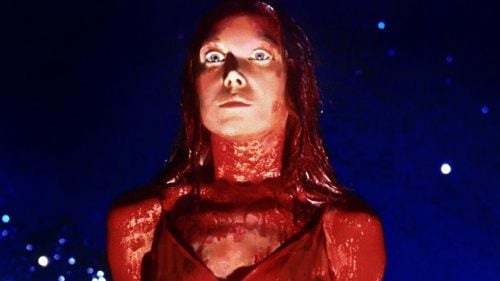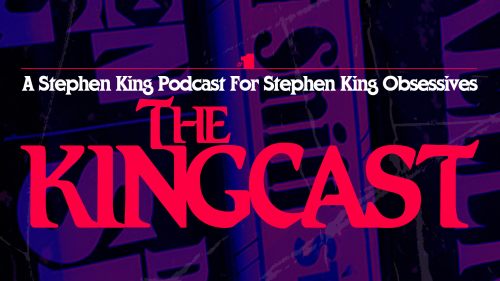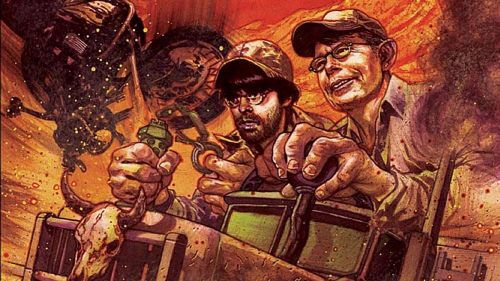Walking THE GREEN MILE, Two Decades Later
Shudder's Creepshow Presents Different Seasons: The Many Sides of Stephen King, an Alamo Drafthouse series of Stephen King screenings in anticipation of It Chapter Two. Click here to see the schedule and get tickets!
After The Shawshank Redemption became every guy and his father’s favorite movie of all time, The Green Mile can’t help but feel a bit like an also-ran in the Frank Darabont-adapts-a-prison-set-Stephen-King-story sweepstakes. But for many audiences that initially missed the boat on Shawshank, an oddly-titled film that came and went in theaters before earning its beloved status on home video, Darabont’s second film gave them - and him - an opportunity to capture that magic all over again, for the first time. The fact that it features an all-star cast and a murderer’s row of talent behind the camera certainly only enhances The Green Mile’s individual pedigree; but this “prestige” King adaptation remains today a particularly polished and impactful addition to the novelist’s expansive canon, much less the filmmaker’s uniquely curated body of work.
There’s something a little wild about Darabont’s skill, twice in a row, in understanding how best to translate King’s material to the big screen, especially given the (admittedly broad) similarities between the stories of Shawshank and Green Mile. The latter is decidedly a more fantastical premise, but he treats both stories the same in terms of the practicalities of the world created on screen and the responsibilities and challenges of the characters. There’s a tangibility to the setting, despite its theatrical insularity, that Darabont explores fully, and subsequently populates with an ensemble of personalities that of course propels the drama but also feels believable for the time and place in which the film is set. The privileged venality of Percy Wetmore (Doug Hutchison); the feckless culpability of Eduard Delacroix (Michael Jeter); and the quiet authority of Hal Moores (James Cromwell) convey an authentic and lived-in community within the prison.
Tom Hanks had already entered a veritable leading-man saintliness by the time he played Paul Edgecomb, but the actor fully captures the character’s complicated and uncertain reaction to the discovery that one of his charges - a death row inmate named John Coffey (Michael Clarke Duncan) - possesses powers and abilities that belie and contradict the state’s verdict that he is a child murderer and a man capable of violence. Hanks is especially skilled at making this sort of uprightness feel charming rather than cloying; but Edgecomb’s growth - let’s call it enlightenment - over the course of the film gives the audience a proxy through which to explore circumstances that seem, at best, improbable.
Duncan’s role, meanwhile, is perhaps charitably described as “problematic,” at least in today’s parlance. A physically imposing black character with the mentality of a child, he admittedly embodies some uncomfortable stereotypes held at that time about people of color; but the movie preys on that deliberately, and as an extension of King’s writing, to create a character who at that time would indisputably be sentenced to death for the crime for which he was determined to be guilty, and also be considered undeserving of that sentence. It’s a challenging role to create onscreen and one even more challenging to inhabit, but Duncan did an exceptional job at giving Coffey humanity and a dimensionality - so much so, in fact, that he earned a deserved Best Supporting Actor nomination for his work.
By comparison, the film’s “villains”, Percy and William “Wild Bill” Wharton (Sam Rockwell), are rendered with decidedly less nuance. But there’s something essential about that portrait that only makes Edgecomb and Coffey’s relationship - and Coffey’s “powers” - that much more intriguing, and challenging for the audience to reckon with: Coffey’s altruism in the face of their selfishness confronts viewers with their own prejudices and beliefs, especially in a context of something inexplicable. It’s hard to say which performance is showier, especially given the horrifying cruelty of Percy’s behavior; but Hutchison really throws himself into the role in a way that creates a permanent impression of the actor and not just the character, while Rockwell is so shameless as Wild Bill that for many it became a breakthrough moment that alerted viewers to what they later discovered was an incredibly versatile talent on screen.
Darabont’s treatment of King’s material is, again, exceptional; though it flirts with supernatural ideas in a way that many of his other stories delve deeply into, he combines those elements in a really humanistic and powerful way. What it shares with Shawshank is its enduring exploration of good and bad, unfairness and justice, albeit this time modified - and amplified - by the prospect of circumstances that defy our ability to easily understand, rationalize or process. It’s that idea that bolsters the power of the framing device - Edgecomb as an older man, wrestling with a story that seems too distant to accept, even after witnessing it himself. But ultimately, The Green Mile is a movie not just about what we experience, but what challenges what we can and must believe; and that’s why among King’s many stories about unexplained phenomena, this is one that resonates not just with the visceral energy of watching it unfold, but what we take away intellectually and emotionally after we’ve been surprised and exhilarated by its twists and turns.



